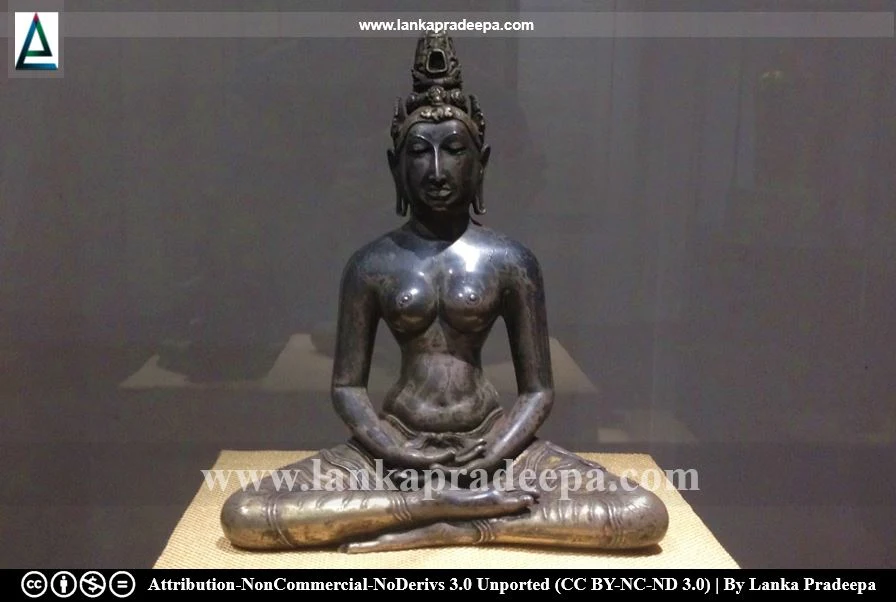
A statue of the goddess Tara was discovered in Kurunegala in Sri Lanka. Presently, it is on display at the National Museum of Colombo (Dohanian, 1983).
Goddess Tara
Tara is considered the most beloved goddess of the Mahayana Buddhist pantheon (Jayawardene, 2016). She started to appear in the society of Sri Lanka around the seventh or eighth century A.D. and was worshipped until the fifteenth century A.D. (Jayawardene, 2016). Evidence for Tara worship in Sri Lanka is found in the Mihintale Slab Inscriptions of Mahinda IV (956-972 A.D.) where she is referred to as goddess Mininal (Gunawardana, 2019; Jayawardene, 2016). The largest figure of Tara in the country is found in Buduruwagala (Gunawardana, 2019).
The statue
This statue of Tara was discovered in Talampitiya in Kurunegala District (Gunawardana, 2019). It is a solid-cast, silver alloyed statue 16.5 cm tall (Dohanian, 1983; Gunawardana, 2019).
The goddess is depicted here in the seated posture of Virasana and in the appearance of Samadhi [(meditation) Gunawardana, 2019]. The hair is gathered in an elaborate Jatamakuta and the empty niche in front of it once had a miniature figure of the Buddha (Dohanian, 1983; Gunawardana, 2019). The niche is surrounded by flame forms and below it are two heads of Makaras (dragons) with the mouths directed to the two sides (Dohanian, 1983). The eyes are shown half-closed but the facial expression is quite severe (Gunawardana, 2019). The ear lobes are perforated but do not extend up to the shoulders (Mudiyanse, 1967). The upper body is naked up to the waist and has no ornaments (Dohanian, 1983). The breasts are fully developed and the nipples are turned upwards (Mudiyanse, 1967). The lower body is covered up to the anklets with a flimsy cloth showing folds. The head-dress, hair and costume are gilt but the flesh is silver coated (Mudiyanse, 1967).
This statue has been dated by scholars to the 8-10th century A.D. (Dohanian, 1983; Wikramagamage, 1990).
See also
References
1) Dohanian, D.K., 1983. Sinhalese Sculptures in the Pallava Style. Archives of Asian Art, 36, pp.6-21.
2) Gunawardana, N., 2019. Identify the statues of Goddess Tārā in Sri Lanka and Evaluate the Importance with Trade. International Journal of Scientific and Research Publications, 9(9), pp.404-410.
3) Jayawardene, S., 2016. Sri Lanka's Tārā Devī. Journal of the Royal Asiatic Society of Sri Lanka, 61(2), pp.1-30.
4) Mudiyanse, N., 1967. Mahayana Monuments in Sri Lanka. MD Gunasena & Co Ltd. pp.54-55.
5) Wikramagamage, C., 1990. [Wijesekara, N. (Editor in chief)] Section II: 500-100 A.D. Archaeological Department Centenary (1890-1990): Commemorative Series: Vol. IV: Sculpture. p.72.
Location Map
This page was last updated on 15 February 2023

